Where ticks live
Content
- 1 Where ticks live: types and distribution
- 2 Habitats of ixodic ticks
- 3 Types of Ixodes ticks: what forests do they live in?
- 4 Hunting season "bloodsuckers"
- 5 Hunting process
- 6 Are there any ticks in the city
- 7 What are dangerous ticks and their bites?
- 8 How viral infections spread by ticks
- 9 Security and Tick Protection Measures
- Mites in nature
- Mites in nature
- Mites in nature
- Tick Disease
Ticks are the largest group of arachnids, with more than 40 thousand species. The most dangerous of them are Ixodes, which can be carriers of serious infectious diseases. In order to reduce the likelihood of encountering such a parasite and the risk of infection, all people should know where ticks live and in what period are the most dangerous.
Where ticks live: types and distribution
Forest mites are small, reaching a length of 2-5 mm in a hungry condition. Such arachnids belong to the subclass of arthropods and live almost all over the world except Antarctica. The variety of types of parasites differs in the place of vital activity and nature of food.
Ixodes ticks, numbering almost 700 species, prefer to settle in the moist forests, densely overgrown with grass in glades, on low trees and shrubs. In nature, their diet consists of plant residues, soil fungi and small arthropods, but they love to drink the blood of animals and people.
There are other types of such parasites:
- gamasid, redraws and argas mites, which are also capable of consuming human and mammalian blood;
- dust mites (saprophytes), whose life is spent in living quarters with people, prefer to eat dead particles of the epidermis;
- subcutaneous (demodexes) - live in the upper layer of the human epidermis and at the base of the hair follicles, they are of the smallest size, so you can only see them under a microscope.
Habitats of ixodic ticks
Optimal conditions for life, where there are ticks:
- regions with high humidity, at least 80%;
- sun-warmed slopes with thick grass and shrubs up to 1 m tall;
- the main habitat of ticks: forest edges, glades, ravines with dense grass;
- in the shade of deciduous trees, fern thickets, among low young trees (aspen, hazel, etc.);
- most often parasites live in coastal thickets near rivers, ponds, lakes and streams, where forest animals come to a watering place;
- soil surface with fallen leaves or mowed grass.
Interesting!
"Bloodsuckers" can settle on the stumps and fallen dry trees, so the tourist, before sitting down for a rest in the forest on the first stump he met, should think carefully.
The most unsuitable habitats for ticks: hills, areas without grass and plants, dry undergrowth in a pine forest, etc.
Types of Ixodes ticks: what forests do they live in?
Among the family of ixodid parasites there are some species that choose different habitats:
- Meadow mites of the Dermacentor genus - carriers of many viral infections can infect humans and even pets (piroplasmosis in dogs).Distributed in areas of deciduous and mixed forests of Europe and Siberia, prefer glades, forest edges, meadows and pastures, flood meadows.
- The genus Hyalomma and its representatives prefer to settle in the steppe zone, live in the southern regions of Russia, the Crimea, in Bulgaria and on the Mediterranean coast, in Asian countries. They can spread hemorrhagic fever.
- Birch mites belonging to the Haemaphysalis family are moisture and heat-loving parasites, their habitat: Crimea, Transcaucasia and Far East, Altai, southern part of Western Siberia and Transbaikalia. They settle in birch-deciduous, coniferous-deciduous, aspen and birch forests. Can be carriers of encephalitis and rickettstosis.
- The brown dog tick of the genus Rhipicephalus prefers coastal areas with high humidity: the Black Sea coast. Dogs are more often the object of his attack, however, the spread of such parasites occurs very quickly due to their ability to multiply in a human dwelling or a dog kennel, where they can arrange whole colonies. Are carriers of the Marseilles fever.
Hunting season "bloodsuckers"
The period of activity of parasites begins when the soil warms up to + 5- + 7 ° С, which occurs in April in central Russia when the first green appears and the buds grow on birch trees. Waking up after winter, they creep out to the surface.
Mites are located on the trees, in the grass, shrubs. Their numbers increase sharply by the second half of May and remain as high as possible until the end of June. Activity depends on temperature and weather conditions, humidity. They do not like hot and dry air, so they go for a hunt in the morning and evening hours. On hot days, they are located in the damp grass, when the weather is cloudy, they look for places to dry.
On a note!
The first season of active “hunting” occurs in the spring and early summer, after which a lull comes. During this period, the ticks have already ate and “rest” until the beginning of August. The duration of this period depends on the weather: if the beginning of summer is cool and wet, then the “spring season” becomes longer, and when dry and hot it becomes shorter.
The autumn outbreak of activity, during which the ticks try to get enough of themselves before wintering, begins in September and lasts until early November, when the cold weather comes.
Hunting process
Forest ticks live in the grass or in the trees, climbing to a small height and stalking their victims. With the help of the paws, on which the organs of smell are located, they sniff the surrounding air. The smell of sweat of an animal or person walking along a path is able to smell from a distance of 10-12 meters.
On a note!
Some mistakenly believe that such parasites fall from trees in the forest to passing tourists. However, in fact, they are not able to climb a large distance from the ground, usually ticks can be at a height of up to 0.5-1 m.
When approaching the "prey" they get over it, firmly clinging to the hooks, suckers. Then they begin to climb up and look for a place to bite, usually choosing areas of the head or neck in animals, in humans - areas with thin skin and close proximity of blood vessels.
Both males and females go hunting, and the latter are more voracious, because for them the blood of mammals is not just food, but also affects the possibility of successful reproduction.
Males dig into the skin, drink blood, and then quickly fall, so a person may not notice them. But females, sucking very tightly, sit and absorb blood for many hours and days.When piercing the skin, the mite releases anesthetic saliva, which sticks the proboscis to the wound for better attachment.
Are there any ticks in the city
The popular belief that city dwellers may not be afraid of tick bites is refuted by data from scientists and statistics of injured people. In every village and even a large metropolis there are parks, squares and areas sown with grass. It is in such places that ticks live in the summer. Scientists cannot answer the question of how they get there, but sanitary services find them there.
Parasites prefer to settle not only on low bushes and trees in parks, but also in lawn grass. However, unlike forest mites, in large cities there are practically no individuals infected with viral infections.
But in small settlements, where green areas are located near the forest, fields with cattle or dacha plots, ticks can be picked up almost on the road or near the lawn, and the danger from them is small, but still exists.
What are dangerous ticks and their bites?
Among ixodic species inhabiting the Russian Federation, 2 types of danger to humans are:
- European forest, common in Europe, except for the northernmost regions, in North Africa and the European part of Russia;
- taiga tick, whose habitat falls on the zones of middle and southern taiga.
These parasites are carriers of dangerous infectious diseases: viral encephalitis, Lyme disease or borreliosis, some types of fevers. However, this does not mean that every bitten tick can infect a person.
Important!
According to statistics, the percentage of "bloodsuckers" who carry infections, is only 1.5-5%. However, outwardly, it is impossible to distinguish a healthy tick from an infected tick, and due to the long incubation period of such diseases, the first symptoms of the disease can appear only after 5-14 days.
Regions where ticks are most at risk of disease:
- Borreliosis - Moscow and Moscow region, Krasnodar region;
- encephalitis - North-West of the Russian Federation, the Volga region, Karelia, the region of the Central District, the Far East, the most cases are registered in Vladivostok and the region;
- hemorrhagic fever - Volgograd, Rostov regions, the Caucasus.
According to Rospotrebnadzor, in the current year one can find regions where there are no ticks in Russia transmitting viral encephalitis. These are the central regions of the European part, including Moscow, Tula, Kursk, Oryol, Ryazan, Smolensk, Lipetsk, Tambov, Murmansk regions, the South and North Caucasus federal districts, Magadan region, Kamchatka Krai, Yakutia and Chukotka.
How viral infections spread by ticks
Ixodic ticks become carriers of infections after their larvae or nymphs drink blood from wild animals (small rodents, etc.), which are carriers of serious diseases. The encephalitis virus, first getting into the stomach of the parasite from a sick rodent or other mammals, spreads throughout the body and accumulates in the salivary glands and eggs.
From an infected female, pathogens of infectious diseases are transmitted to all offspring. Human infection occurs during a bite, when a tick injects saliva with a virus under the skin.
Important!
You should also be aware that the same parasite can be a carrier of several infectious diseases that come to a person as a result of his bite.
Security and Tick Protection Measures
If you are going on a picnic or a walk into the forest where there may be ticks, you should remember that they are able to crawl only in the bottom-up direction, and select the appropriate equipment:
- wear light-colored clothing, as closed as possible with long sleeves;
- pants should be tucked into socks or shoes; cuffs should fit snugly in their hands so that parasites cannot creep closer to the body;
- a hood or a protective headgear is put on the head: although ticks do not fall from the trees, but if they hit the hair while the body is tilted or the person is seated, they can live there for a while and then go down on the neck and stick to absorb blood;
- use repellent agents for dressing clothes that scare off parasites by smell;
- avoid glades with tall grass, bushes, fallen trees and stumps in the forest;
- choose places for picnics where there are no ticks: with low dry grass, in a pine forest without undergrowth, etc.
- After returning home, you should carefully inspect all clothing and skin for the presence of parasites.
Information about where ticks can live and how they fall on human skin will be useful for all people who are going for a walk in a forest or park, to a country house or picnic.Compliance with all safety rules will help prevent the attack of "bloodsuckers" and the possible infection of serious infectious diseases.

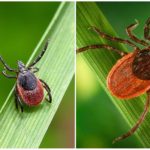
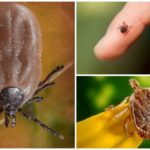
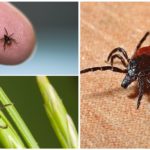


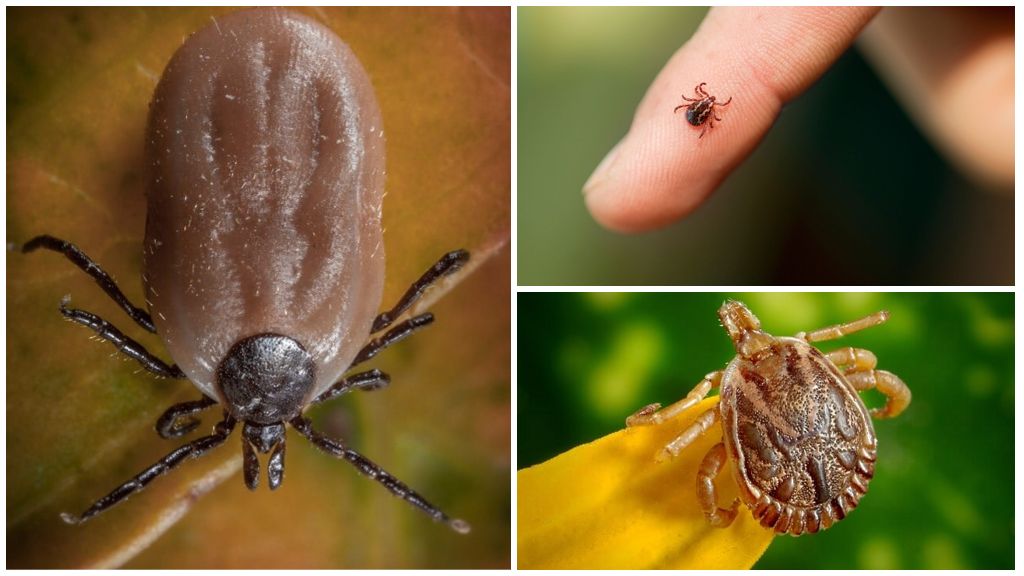

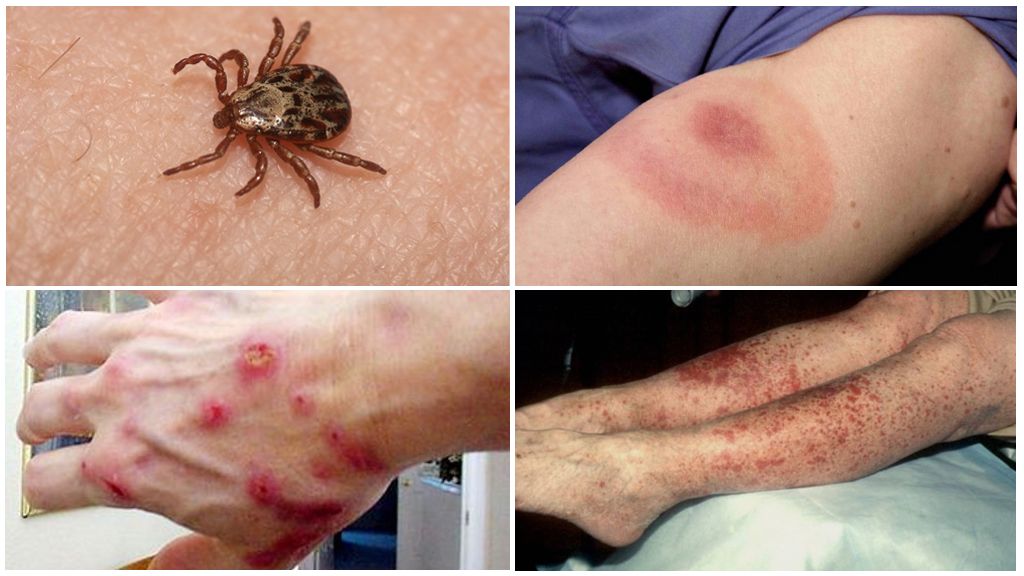

 (votes: 11, Average rating: 4.64 out of 5)
(votes: 11, Average rating: 4.64 out of 5)


